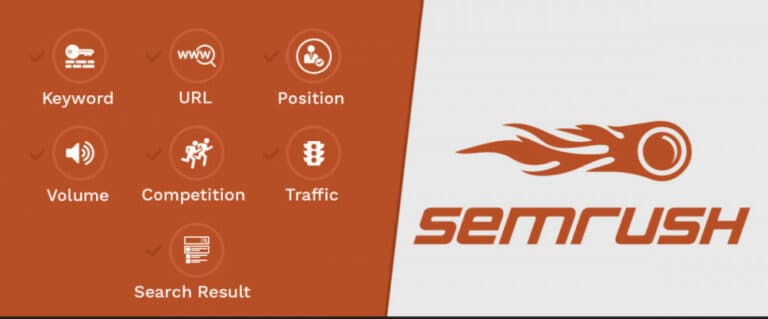How To Target Great Keywords With Blog Posts To Rank On Google’s First Page

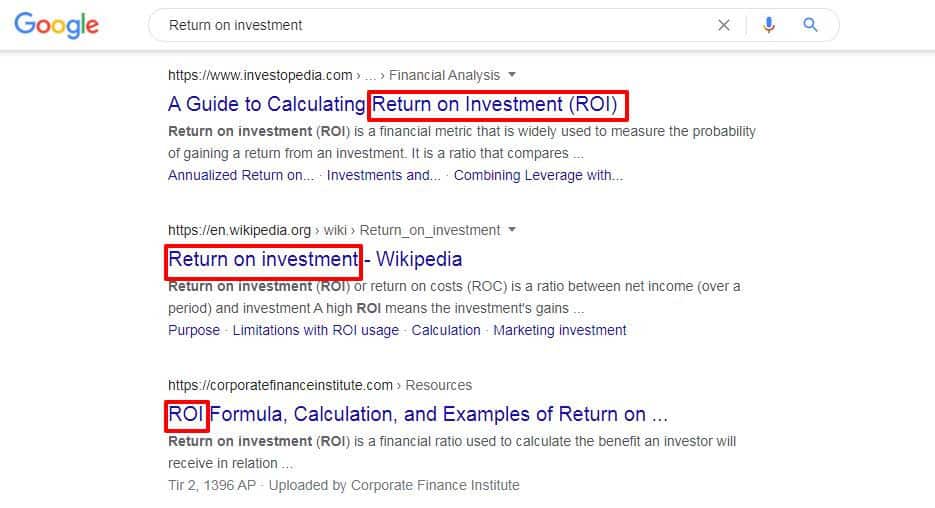
How to Target Keywords with Blog Posts To Rank on Google's First Page
Achieving success in content marketing requires you to write blog posts regularly. Successful blogs are based on content; however, the key to prosperous search engine rank is consistency. Based on Hubspot, marketers who are consistent with blogging are 13 times more likely to receive a positive Return on Investment (ROI).
Today most web marketers understand that every page in a website requires targeting a researched and well-chosen keyword. Yet, numerous marketers skip the keyword research step while creating blog posts. This would be wasted chance since blog posts included optimized keyword may assist you both now and later:
- You can create blog posts on hot, trending topics temporarily. In this way, when a certain keyword term is popular, you can catch search traffic. When the trend gets over, you can just let the post remains in your blog archives.
- How-to articles as blog posts will remain fresh and catchy over the years and rank quickly.
Let’s start with few examples of blog posts with targeted keywords:
Well-timed trendy topic: While holding the World Cup, many individuals would do searching for vuvuzelas. Some bloggers can take advantage of this by creating blog posts on where to buy vuvuzelas or filter the vuvuzela noise. Look for topics you may earn money in this way.
Evergreen content: In these kinds of posts, you can answer common questions. If people ask you a question over and over, they do not just asking you that question. You can be sure that they are searching for it on the internet as well. Create blog posts on such topics. Evergreen posts continue to work for you a long time after publishing; they can display you as an expert; Google will love it. These posts can elevate backlinks to your website and have even more advantages. They can apply to enormous topics from civil rights and animal rights to finding a good contractor or editing a manuscript.
Recipes: If you are running a food blog, you recommend doing a bit of research in advance of choosing a title and publishing your posts. Peoples are looking for recipes every day and night.
Following, we are providing you with some easy procedure for targeting keywords with blog posts.
Step #1: Recognize Relevant Keyword
Before doing anything, you must inform yourself about the keywords that can lead to relevant traffic. It would be best if you googled according to your goals for the post.
If you are following a well-timed topic, you better insert “Google Suggest” or “Google Trends” to discover keyword phrases. Google Keyword Planner and its alternative Keyword Tool are good tools to help you with that.
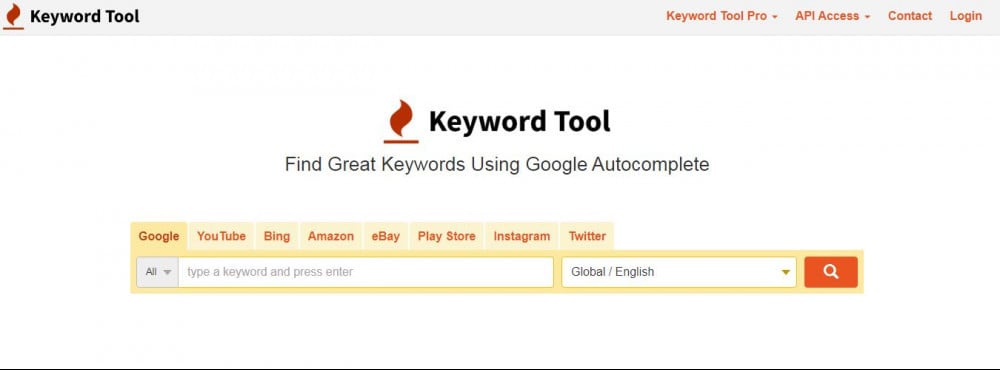
One of the best approaches to discover keyword terms closely connected to your readers for a long time is by considering your analytic data. Look for certain keywords and groups of related keywords driving traffic, although you do not have a page for that. For instance, if people find your marketing blog with the question of “target keyword with a blog post,” but you do not have a post on it, write one! A post with that group of related keywords in the title may rank higher for those searches and maybe more relevant, increasing click-through.
Imagine what kind of article you would be more likely to read:
Healthy diet
Or
How to achieve a healthy eating lifestyle and maintain it?
Most probably, you would pick the second one. That is because finding niche topics in your field and produces content on them is so important. In this case, the niche topic would be how to maintain a healthy lifestyle by eating healthy.
There are few ways to discover niche topics:
- Thematic forums
You write content on food, for instance. A search on Quora with the keyword “food” reveals that readers are interested in reading about healthy food. So why not write a post on it?
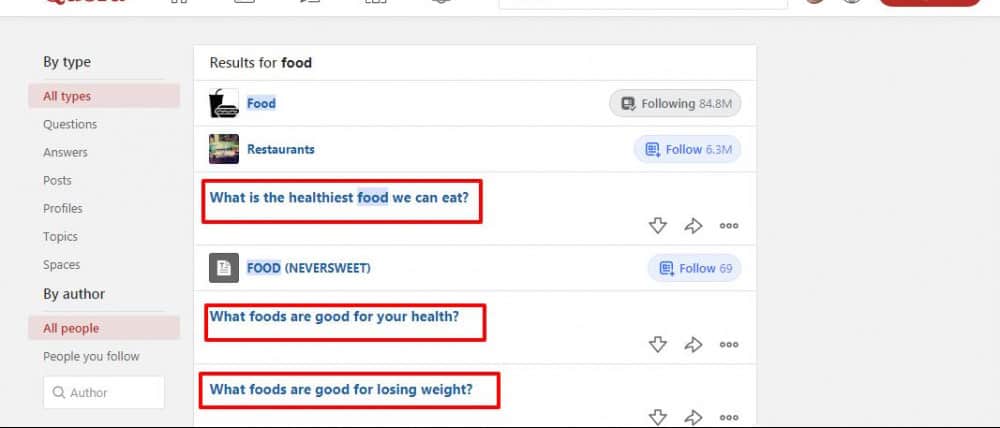
- The “see also” section and table of content in Wikipedia
While looking for what to write about a healthy diet, look up the “see also” section on Wikipedia. It shows that people are also searching about healthy eating, diet, and other topics.

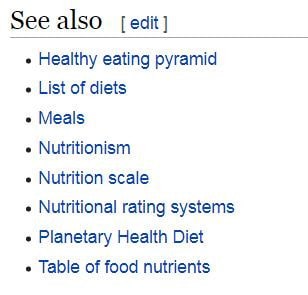
- The “Related searches” section in Google
If you want to write content on a healthy diet, Google’s suggestions at the bottom of the page may provide you with some idea about what to work on. In this case, the suggestions include a healthy diet plan, a healthy diet plan to lose weight, a healthy diet chart, and more.
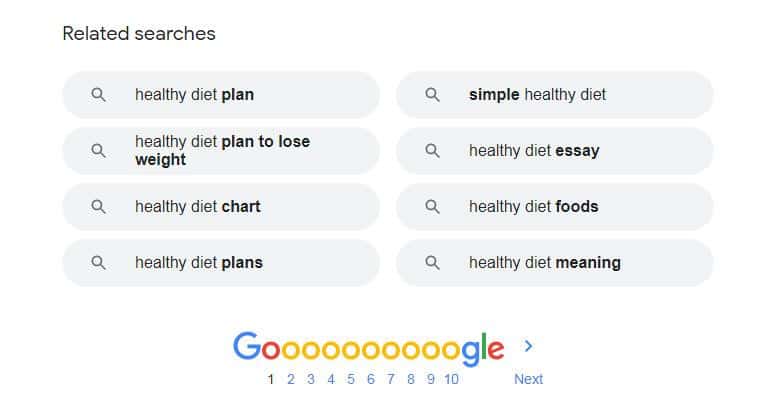
- Google Keyword Planner
Go to your Google account and then go to Keyword Planner. You will face tons of keyword phrases and search volume trends.
- Using SEO software for keyword suggestions
SEO tools also can be used to find keyword suggestions. That is what WordStream suggests when researching the keyword “nutrition”:
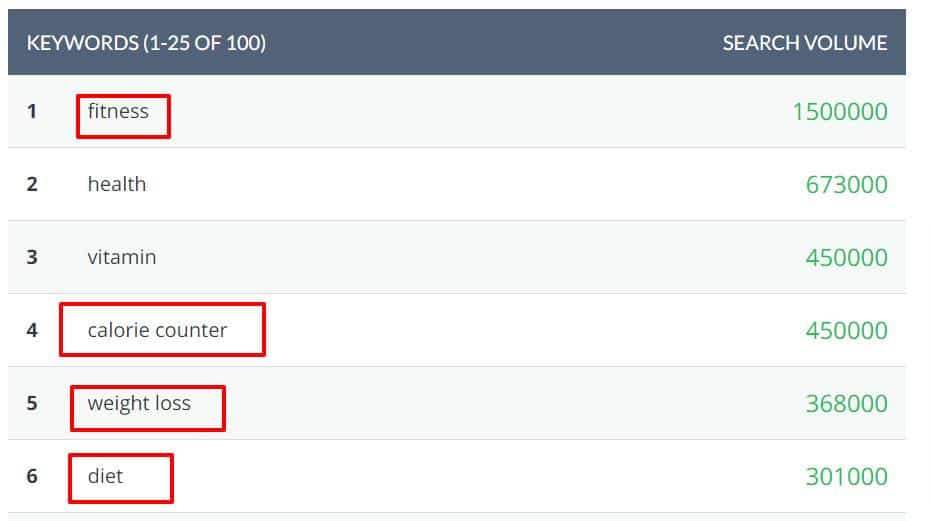
Obviously, users are interested to know more about foods related to body shape.
Step #2: Reduce Your Topic
As the topic “healthy diet,” for instance, is extensive, you are improbable to rank on the first page for that keyword phrase. It would help if you chose a narrower topic that yet remains catchy for the audience. If you use keyword grouping software (such as Keyword grouper, WordStream, and Keyword Clarity), you can rapidly find out a selection of relevant and specific keywords. Otherwise, utilize a keyword tool to decide on the right phrase.
On the possible topics, and if you have the knowledge and tools, you can make a video or gift about the topic.
Let’s explain the reduction of your topic in another way: utilize long-tail keywords.
Compare the following two keyword groups search results:
Healthy diet: 8,680,000,000 results
How to achieve a healthy eating lifestyle and maintain it: 510,000,000 results
Obviously, the longer keyword has the fewer Google results, and thus it is less competitive. Therefore, long-tails are not difficult to rank high.
Another piece of advice for that is to put keywords in titles.
Placing relevant keywords to the title tag of your posts assists Google in moving along your page faster. Therefore, Google can decide quickly how much your content is related to a search query.
Look at the following example:
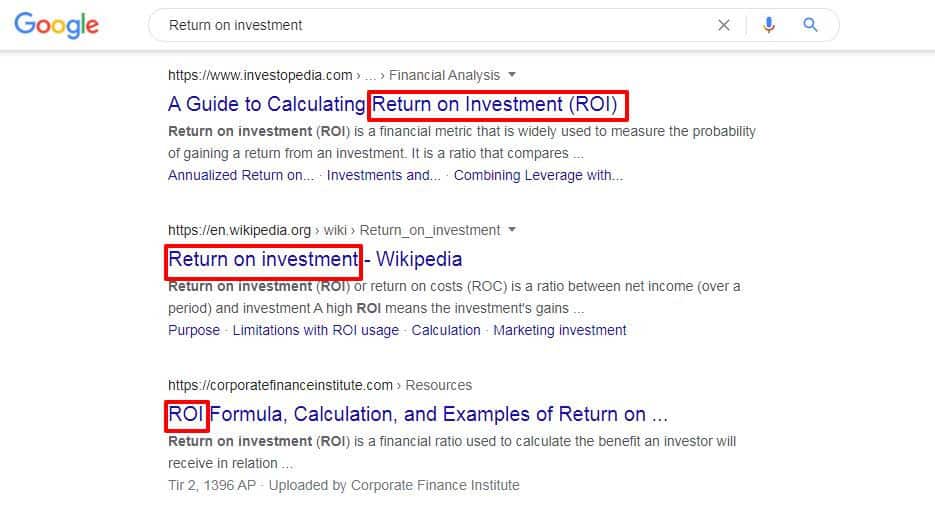
Keep in mind to use keywords in the initial 100 words of content.
If related keyword phrases show up in the initial 100-150 words of your blog post, it will assists Google get quicker what your page is about.
Step #3: Create Buyer Personas
The idea of a buyer persona may help you be better informed about your audience's needs and write attractive content for them.
When your content resounds with your target readers, it elevates shareability and promotes search rankings.
Following, you can find an example of a buyer persona profile by Neil Patel:
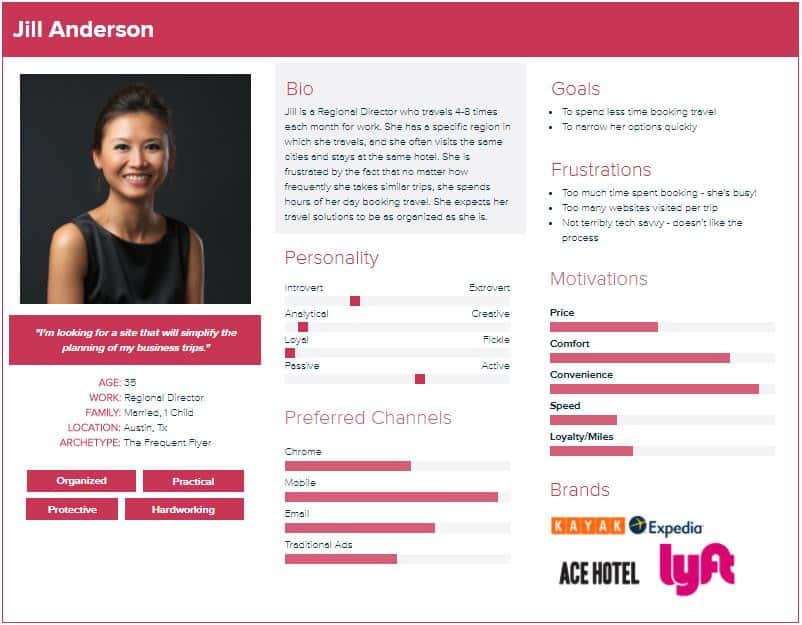
Step #4: Create Long Content
Indeed, writing a blog post that drives traffic and leads is not easy at all. You can be sure that a 300-500-word general blog post that is easy to produce- will not affect any search query need and clearly will not promote your business.
Long content, on average, begins from the number of 1200 words.
Creating and publishing longer content is advantageous in terms of SEO. At first step, long content commonly brings together more backlinks. In the second step, longer content performs better than shorter blog posts considering shareability.
Long content disposed to rank higher, according to a ranking factors study by SEMrush:
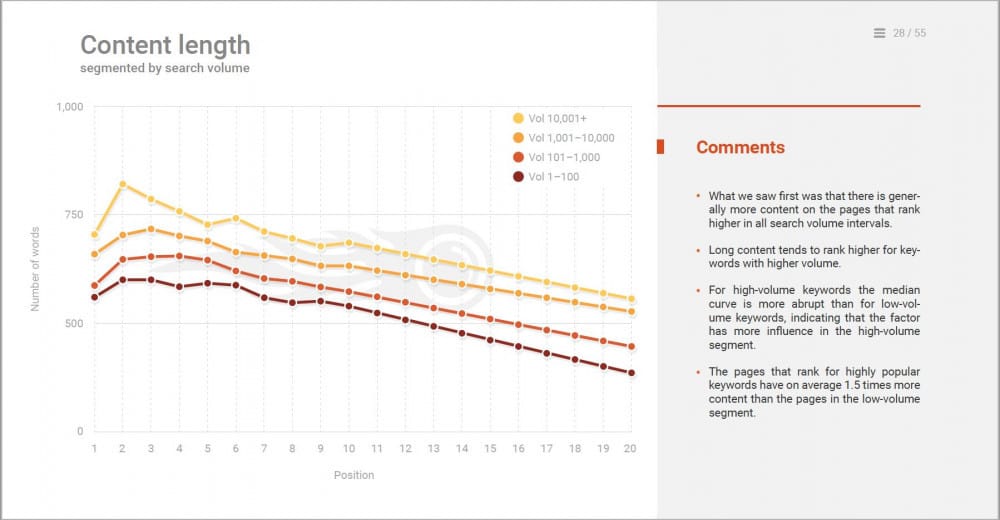
Step #5: Write Blog Posts Enriched by Practical Value
If you want your blog posts to convey value truly, you are required to make them practical. Keep in mind that readers are tired of reading general posts. They look for something helpful and relevant. They want to read a blog post that covered their questions and persuades them to implement what they read.
Editorial calendar is a method applied by successful bloggers; to the grantee, their posts address the suitable topics consistently. This tool helps them supply their blog with valuable posts, even while they are absent for a period to run the blog.
Your blog post is required to be high quality. Social Media Examiner’s report
said that more than a half of all marketers approve that useful and unique content is the most vital kind of content.
If you can create more actionable and unique blog posts consistently, your blog clearly will have the power to pull in traffic. This will elevate your leads, community engagement levels, and search traffic in advance.
You will not certainly rank in Google’s top 10 overnight. But you will see a huge improvement in your search ranking by spending time and consistent effort.
While writing your blog posts, please choose a plan, a written procedure, and use it consistently.
You will learn what works for others in your field, and you will improve both your organic search and referral traffic in 90 days.
Initiate with a powerful introduction: In writing a blog post, you cannot ignore the introduction, so learn to create a powerful introduction related to users' search query phrases.
The conclusion is important, as well. Since it can wrap up the concept you introduced at the opening of the post.
Remember that your beginning paragraph is your only chance to attract readers to your post. The first paragraph usually declares a thesis or a point that captures the readers and desires to read more.
There are a few hints for a good introduction:
- Prepare your readers and them aware of what advantages they will obtain by reading your post.
- Create a preposition. It means to write a statement that summarizes the blog post.
- Rewrite the issue or solution mentioned in the headline to demonstrate to the audience you know their problems.
Step #6: Raise Page Loading Speed
Forrester Consulting conducted the most recent study, acclaims that two seconds is the recent threshold considering the average users' expectation to load a web page. 40 percent of users will not wait longer than three seconds to leave a website.
Page loading speed also is a key ranking factor for Google.
Overall, you tend to ensure your page loading speed is as fast as possible. We recommend you to analyze your page speed with Google’s PageSpeed Insights, as a good way to start.
Step #7: Renew Your Content
Refreshing your content and feeding it with up-to-date facts would always be advantageous for the CEO.
Google loves new content. When you update your content, you can also repair broken links and enhance the users’ experience. Since your former SEO data, such as page visitor or CTR, is stored, it would be simpler to raise an updated blog post on Google instead of creating a new one from the beginning.
Keep in mind to add a note including the date of your update to inform your audience you create the most up-to-date content and tend to become of great worth for them.
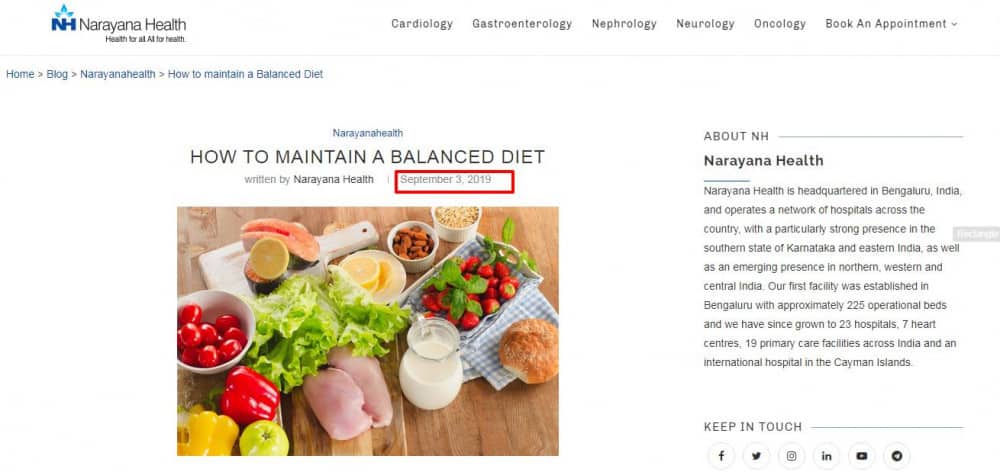
Conclusion
We have provided you with some advice to remember while writing your keyword-targeted post:
- As aforementioned, use your keyword in the title tag. It is critical for search engines.
- In case you are making a video post, you need some text on the page. Do not forget to include the keyword, and relevant variations on your keyword, in the text.
- Utilize the keyword in suitable Meta tags, like the file name and Meta description and alt text of the images. Use Meta tags in the description of the video and the title, as well.
- Use internal linking. For instance, if you have an index page of contents and another of certain content, add a link to that certain content from both, with optimized anchor text.
- Be sure to promote your post on Facebook, Twitter, etc. In this way, you support external linking as well.
- Use a long-tail keyword phrase to rank on the first page.
- Use keyword phrases in the title.
- Use keywords in the initial 100 words.
- Create buyer personas.
- Create longer content, starting from some 1200 words.
- Write blog posts enriched by practical value.
I trust you enjoyed this blog post. Please come back for a new one tomorrow.
JeannetteZ
I would love to hear from you. Please leave me your questions, experience, remarks, and/or suggestions about your target keyword research in the comments section below. You can also reach me by email at Jeannette@WorkFromAnywhereInTheWorld.com.
You might also enjoy these blog posts:




